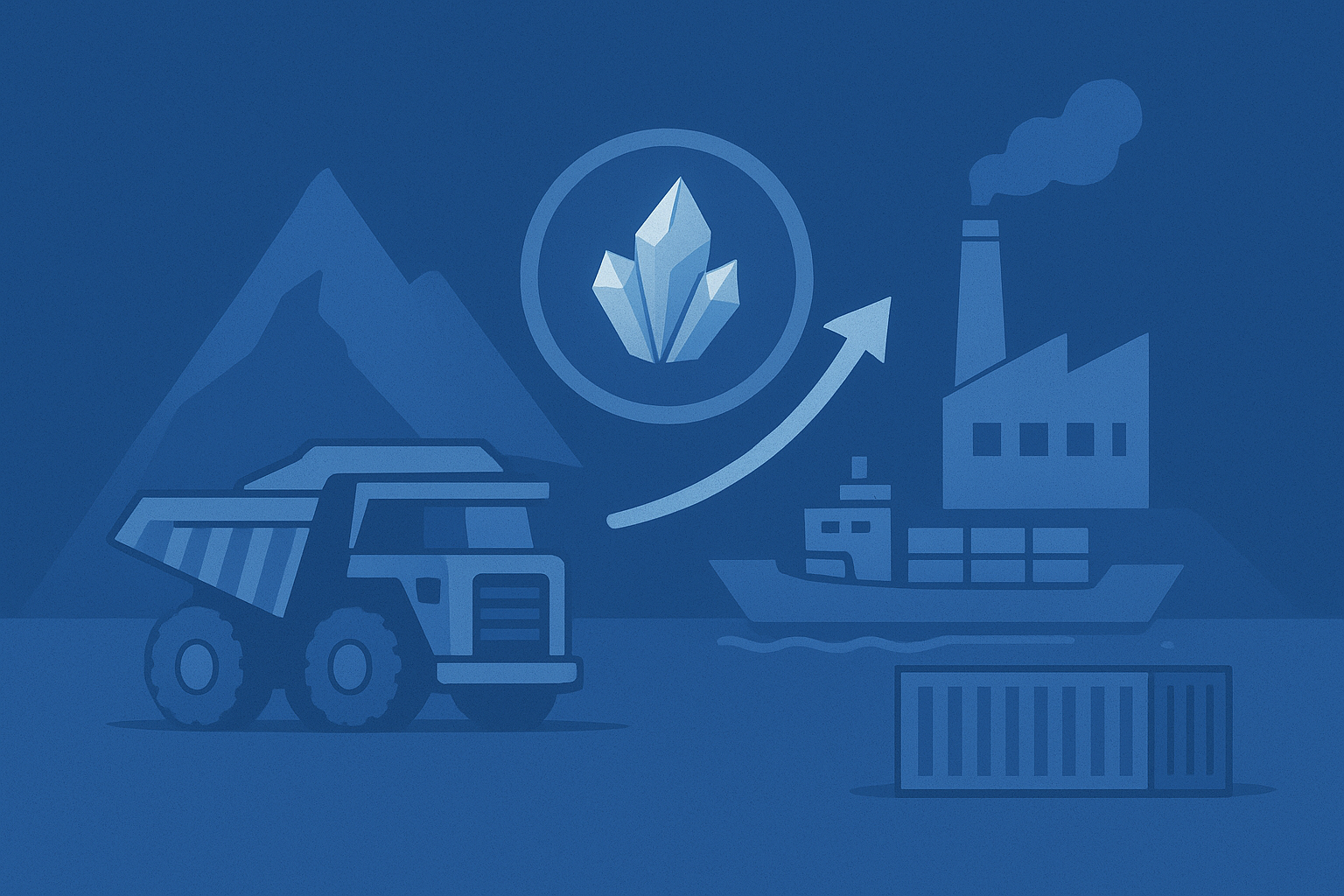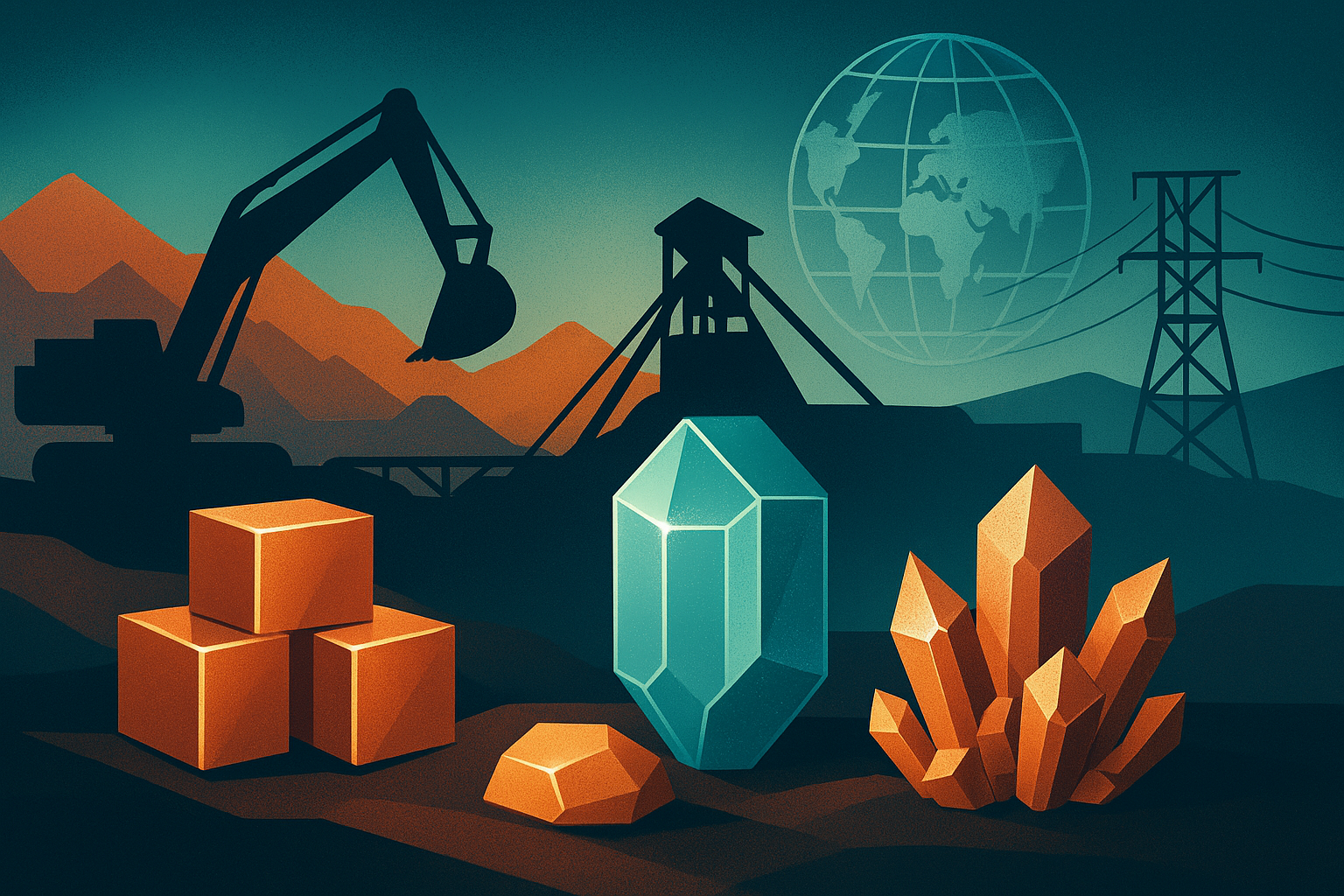Global supply chains for critical minerals—lithium, nickel, cobalt, and rare earths—are entering a new battleground as a $1.8 billion consortium led by Orion Resource Partners launches an ambitious initiative to fund and secure upstream projects worldwide. The move, announced via PR Newswire, underscores the escalating race among investors and governments to control the materials powering electric vehicles, renewable energy storage, and advanced electronics.
The news comes as supply-chain security has shifted from a policy concern to an investment opportunity. With the U.S., EU, and allies ramping up their “friendshoring” strategies and China tightening its export controls, the critical-minerals ecosystem is rapidly evolving into one of the most strategically vital—and competitive—arenas in global markets.
The Rise of a New Supply-Chain Power Bloc
Orion’s consortium reportedly brings together institutional investors, industrial partners, and sovereign funds seeking long-term exposure to energy transition assets. The group plans to target equity and debt financing opportunities across key extraction and processing ventures, addressing what the International Energy Agency (IEA) has called a “chronic funding gap” in early-stage mining development.
Recent data from BloombergNEF estimates that more than $400 billion in new mining investment is needed by 2035 to meet global decarbonization targets. Yet, financing remains scarce due to permitting delays, geopolitical risk, and environmental hurdles—factors this new consortium aims to mitigate through pooled capital and structured deals.
“Private capital has become the new driver of resource security,” said an Orion Resource Partners spokesperson, highlighting the fund’s goal of building an alternative financing ecosystem for strategic materials outside traditional banking or government programs.
Why This Matters for Investors
For investors, the consortium’s timing could not be more strategic. While large-cap mining firms like Rio Tinto ($RIO) and BHP ($BHP) remain dominant, upstream critical-mineral developers—especially those in lithium, graphite, and nickel—are emerging as the next wave of growth.
Market analysts at McKinsey & Company project global lithium demand will increase fivefold by 2030, driven by electric vehicle adoption and battery storage expansion. The Orion initiative could provide much-needed liquidity to smaller developers in North America, Australia, and Africa, unlocking value in previously underfunded assets.
However, investors should also recognize the long development timelines typical of mining projects. From exploration to production, lead times can span 7–15 years, meaning returns are far from immediate. Moreover, regulatory volatility—such as environmental permitting delays in Canada and Australia—remains a persistent risk factor.
The Broader Geopolitical Undercurrent
The consortium’s formation also fits into a broader geopolitical realignment of mineral supply chains. Following the U.S. Inflation Reduction Act and the EU’s Critical Raw Materials Act, Western governments are encouraging private investment into strategic resource projects that reduce dependency on China, which currently dominates over 70% of global rare-earth refining capacity (U.S. Geological Survey, 2024).
This alignment of private capital and national policy could create tailwinds for publicly listed miners and exploration firms in the West. Stocks in companies such as MP Materials ($MP) and Lynas Rare Earths ($LYC.AX) have already reflected investor optimism, gaining momentum on expectations of reshored supply chains and resilient pricing.
Future Trends to Watch
- Increased Vertical Integration: Expect more alliances between miners, battery manufacturers, and automakers as companies look to secure supply continuity.
- Rise of Private Resource Funds: Institutional capital is shifting toward resource-focused private equity vehicles to capture early-stage gains.
- Government Incentives: Subsidy and grant programs under the U.S. Department of Energy and the EU Innovation Fund could accelerate project financing.
- Environmental, Social, and Governance (ESG) Premiums: ESG-compliant projects may command higher valuations as global investors prioritize sustainable sourcing.
Key Investment Insight
The Orion consortium marks a structural shift in critical-mineral finance—from passive commodity exposure to active infrastructure ownership. Investors should watch for opportunities in mid-cap developers, processing facilities, and specialized ETFs tracking the energy transition supply chain. While the sector’s cyclical nature and long gestation periods pose challenges, the underlying demand story remains robust.
As the supply-chain race intensifies, critical-minerals financing is evolving into the next frontier of strategic investing—where private capital, industrial strategy, and global politics converge.
Stay tuned to MoneyNews.Today for continuing coverage on emerging industries and investment trends shaping tomorrow’s markets.





